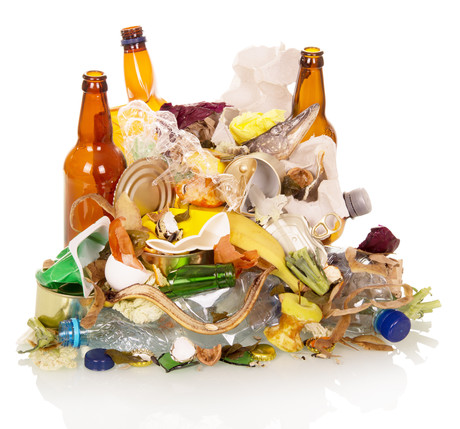Foodservice packaging is a suitable composting feedstock

Compostable foodservice packaging can be effectively used as a feedstock in commercial composting facilities, according to a six-phase study.
There has previously been little information about the benefits of compostable foodservice packaging in terms of traditional feedstock characteristics for compost production. A study, conducted by the Compost Manufacturing Alliance (CMA) and funded by the Foodservice Packaging Institute (FPI) and the Biodegradable Products Institute (BPI), found compostable foodservice packaging (plates, cups, food trays, cutlery, napkins and bags) performed just as well as wood and other traditional feedstocks.
"While the compostable packaging industry believed that these items had value to composting operations beyond diversion of food waste, there was little data to support this," said BPI Executive Director Rhodes Yepsen. "The goal of this study was to determine the impact a large volume of compostable foodservice items would have on the composting process, when compared to traditional compost inputs like yard trimmings, straw, wood shavings and grass."
The six phases of the study included foodservice packaging selection and analysis; feedstock preparation; pre-process sampling and analysis; active composting and monitoring; post-process sampling and analysis; and reporting and peer review. The CMA conducted operational field tests at two commercial composting facilities, and each test included two control samples using the facilities' standard composting mix and two samples using compostable foodservice packaging in place of the facilities' customary bulking agents and carbon sources.
An independent laboratory tested and analysed the samples throughout the active composting process using Test Method for the Examination of Composting and Compost procedures to determine if there was any noticeable effect from the compostable foodservice items. After processing, the finished compost samples were tested for pertinent compost characteristics, including pH, nutrient content, organic matter and moisture content. The report and its findings were then reviewed by industry experts, including CMA members and representatives from the United States Composting Council and BioCycle Magazine.
The analyses performed before, during and after active composting found that compostable foodservice packaging was an adequate bulking agent, and it did not affect the balance of carbon to nitrogen ratios, nutrient levels, moisture content, or porosity to feedstocks or finished compost.
"Compostable foodservice packaging did not add or take away any nutrient value from the finished product," said the CMA's Susan Thoman. "Given these findings, compost manufacturers may want to consider compostable foodservice packaging as a viable feedstock, particularly in areas where composters may incur significant costs to source carbon-bearing feedstocks due to seasonally scarce materials."
The study warned that composters looking to introduce new or additional foodservice packaging should make sure it will disintegrate, keeping an eye on target operating parameters like moisture and temperature.
Lynn Dyer, President of FPI, said the results are encouraging. "Knowing that compostable foodservice packaging not only helps supply desirable food scraps to composters but can also reduce the amount of supplemental feedstocks composters must collect or source is a major benefit."
Fonterra charts progress against its 'Climate Roadmap'
NZ dairy co-operative Fonterra says it is on track to meet its climate targets and is coal-free...
Cargo airline joins coalition to reduce energy in frozen food supply chain
Emirates SkyCargo has joined the 'Move to -15°C' coalition, which aims to reduce...
Japanese beverage company's sustainability callout
Asahi Group Holdings has announced the launch of the Sustainability Growth Platform, alongside a...














